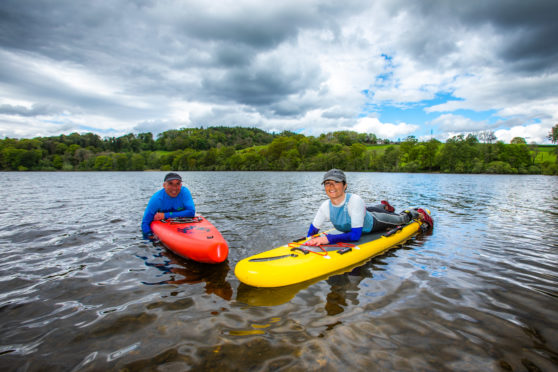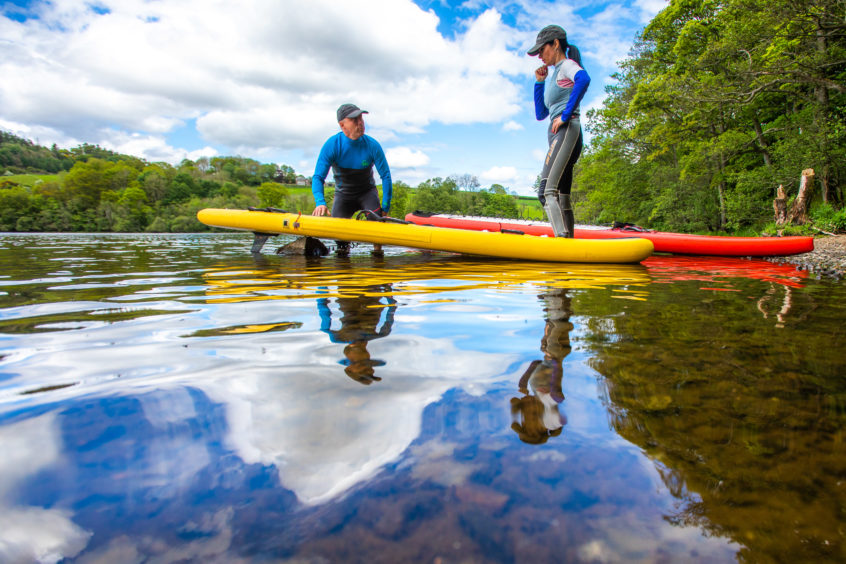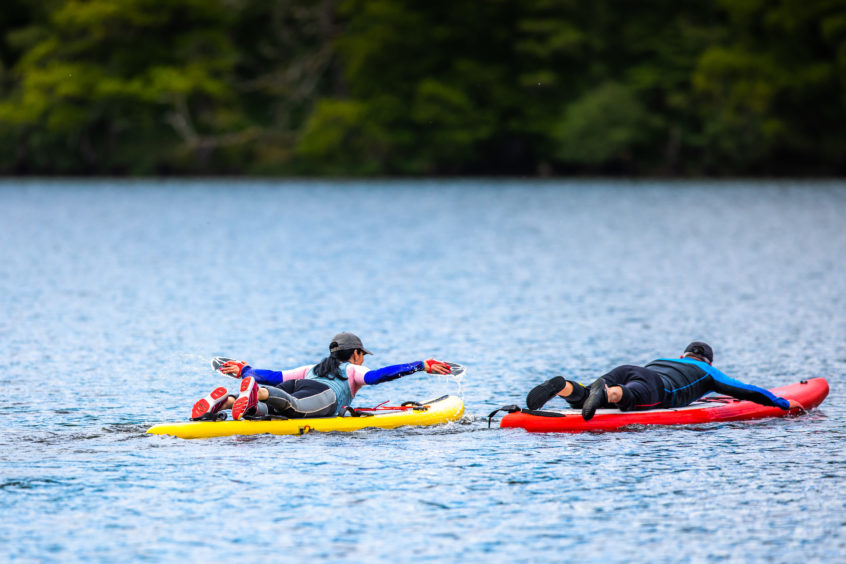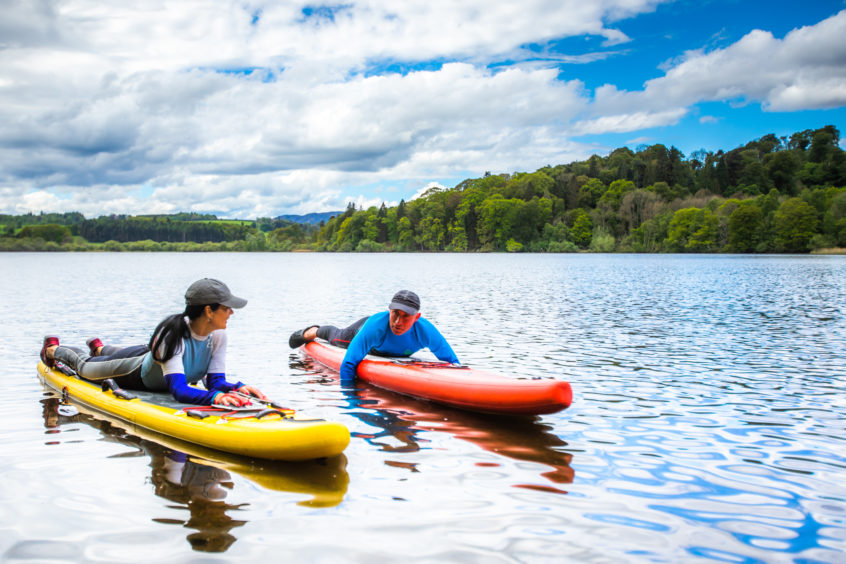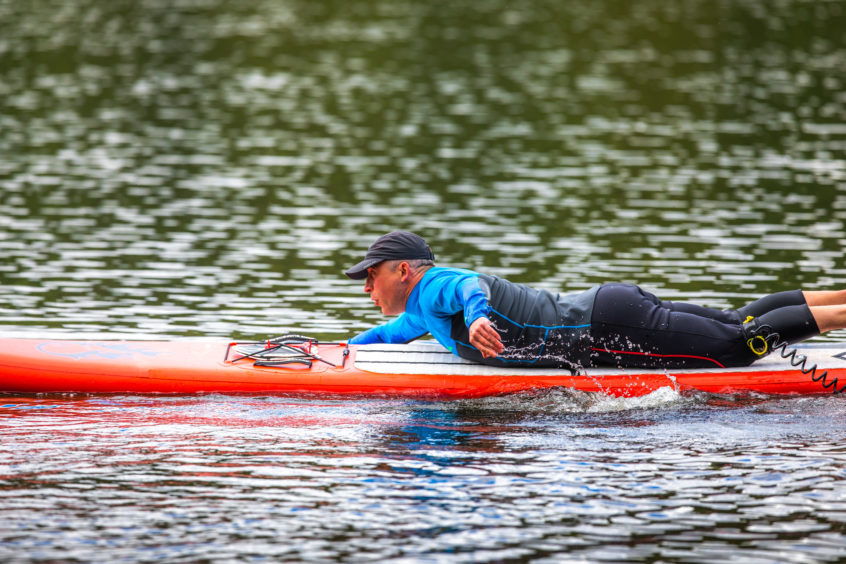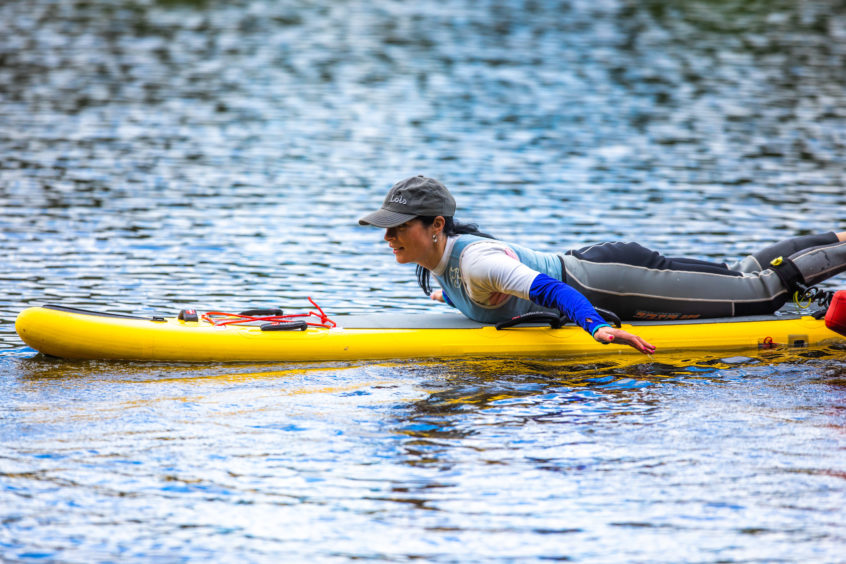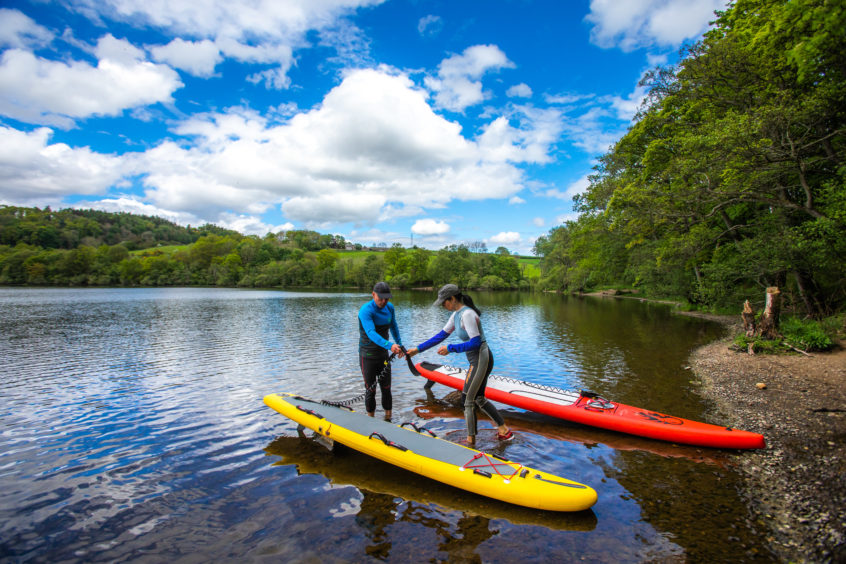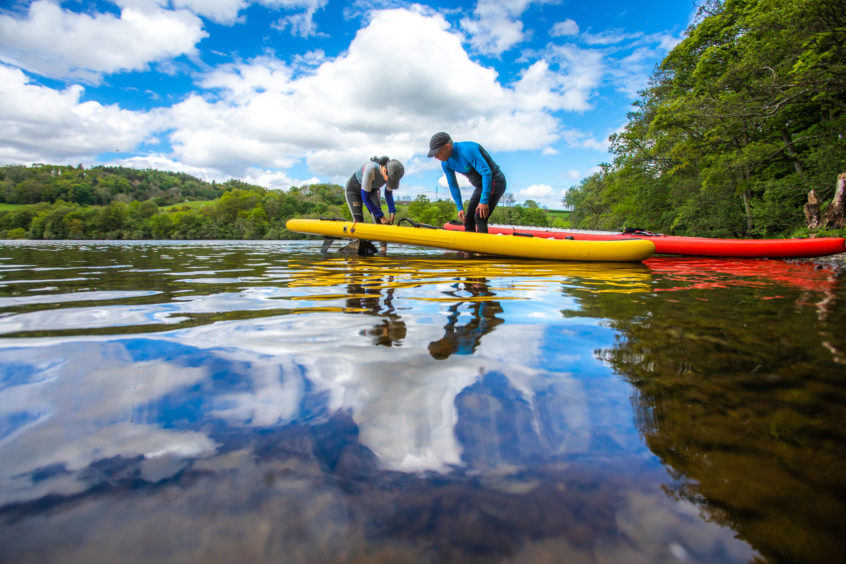Prone boarding – a form of paddling where you get to lie down. Blind adventurer Dean Dunbar shows Gayle the ropes…
When I hooked up with blind adventurer Dean Dunbar last summer, we went paddleboarding on Clunie Loch near Blairgowrie.
Since then, Dean, who has set more than 25 world-firsts in everything from open-water swimming to stand-up paddleboarding (SUP), has taken up the lesser-known sport of prone boarding.
What the heck is that, you may ask? Basically, you lie prone on a board instead of standing up.
Dean, 50, took up the sport to “mix things up” after he developed a raft of injuries.
“I’d been doing a lot of long-distance SUP and was beginning to feel twinges,” he says.
“The main one was a foot injury that forced me to stop paddling during a 220km non-stop SUP challenge in September. I’ve had problems ever since.”
The great thing about prone boarding is it’s easy to get started, plus it’s fab for Dean as there’s no pressure on the feet.
Meeting up with Dean last week – again at Clunie Loch – he tells me the sport is a bit like swimming “but above the water” and that you need to perform either a front crawl or butterfly stroke.
Without further ado, we push our prone boards into the loch and attach leashes to our legs to stop them floating off.
Showing me where to lie – on the “deckpad” – Dean then instructs me to keep my arms close to my body and go for it.
It’s surprisingly intuitive and I speed along doing the front crawl towards a wooded island, flanked by Dean… until I lose power. “Try the butterfly,” suggests Dean, so I give it a bash and find I’m not too bad at it.
The best thing to do is to change between strokes, and, if you want to power on, kneel on your knees. This is a more precarious position but it gives you more of an “attack” at the water.
Another thing you can do to boost power and propulsion is to use plastic hand paddles.
I try these and almost double my speed, but because they add weight, I soon lose impetus – heck, this is tough!
Balance and paddle technique are different from SUP but the fun factor is there and prone boarding can be a great cross-training tool, and can keep you on the water during certain types of injuries.
It’s tempting to crane your neck up to see where you’re going, but as you get used to the motion, you realise you don’t need to. Because I’m new to this, I find myself performing a few press-ups and yoga-style stretches (on the board) to ease things out.
The best thing about prone boarding is that you need zero experience. A complete novice can get on and do it, whereas you need some tuition to kayak or SUP.
Dean took up prone boarding in November after meeting his “prone guru” Holly Henderson at the Great Glen paddle in September where she was tackling a 96km course over two days. She’s been helpful with kit and tips on technique.
Dean is currently in training for a self-supported 310km expedition with kayaking pal Patrick Winterton.
“We’ll take our kit on packrafts – including fold-up bikes and camping kit– through the sea on to land and pick up food en-route.
“Ultimately, 250km will be cycling and the rest will be mainly prone boarding, with a little bit of sea swimming thrown in.”
Dean rises at the horrific hour of 4.15am to do physio exercises before heading to the swimming pool in Blairgowrie at 7am.
He trains there for two hours, covering around 4km in different strokes, before heading to Clunie Loch.
“I swim around 5 or 6km doing 50 strokes front crawl, 50 butterfly, 50 with hand paddles, and then double this to 100 each stroke,” he says.
“I play around; I’m still finding my feet. Doing 8km is hard for me – much harder than SUP. But I’ll need to get up to around 20km towing a raft by September.”
In 2017, Dean paddleboarded from North Uist to the remote island of St Kilda – a gruelling distance of 70km through North Atlantic swells.
It was a feat that had never been attempted before on a SUP, never mind by a blind paddleboarder.
While he is registered blind, Dean still has some sight and relies on peripheral vision because his central vision has gone. “Some days are better than others but my sight is deteriorating,” he says.
“I have blurred and blind spots, flashing lights and debris floating around in my eyes constantly.”
Dean’s love of extreme sports was born in 1998 after doing a charity tandem skydive to raise money for a blind school.
It was the first adrenaline sport he had tried and he was instantly hooked.
He set up Extreme Dreams in 2002, a website that charted his adventures and name-checked the companies that supported him.
Over the decades, he has conquered more than 100 different activities including canyoning, bungee jumping, wing walking, zorbing, sandboarding and an adventure race.
Rhona, a GP, has partnered Dean on many of his activities, whether helping him on safety boats, transporting him to places, or being on his team.
They do a lot of training at Clunie Loch. “The water is usually calm so it’s relatively safe,” says Dean.
“There may be the odd pike swimming around, but in 15 years of playing
around here, I haven’t seen any monsters.”
Info
Prone boarding is relatively unknown in the UK, but it’s huge in Australia, with races and competitions on the waves.
To do the sport, you need a proper prone board – paddleboards are too wide. You can reach speeds of around 5 to 6km an hour on a prone board, or faster if you’re in competitive mode.
For more information on Dean’s exploits, see extremedreams.co.uk
